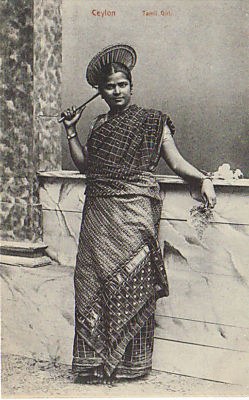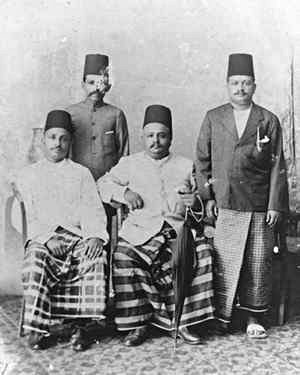Related Research Articles

The Sinhalese people, also known as the Sinhalese or Sinhala people are an Indo-Aryan ethno-linguistic group native to the island of Sri Lanka. They are the largest ethnic group in Sri Lanka, constituting about 75% of the Sri Lankan population and number more than 15.2 million.

Sinhala, sometimes called Sinhalese, is an Indo-Aryan language primarily spoken by the Sinhalese people of Sri Lanka, who make up the largest ethnic group on the island, numbering about 16 million. Sinhala is also spoken as the first language by other ethnic groups in Sri Lanka, totalling about 2 million speakers as of 2001. It is written using the Sinhala script, which is a Brahmic script closely related to the Grantha script of South India.
Katunayake, is a suburb of Negombo in Western Province, Sri Lanka. It is the site of Bandaranaike International Airport, the primary international air gateway to Sri Lanka. With the change of government in 1977 and the introduction of the open economy policy a large area was allocated to create a free trade zone.
Sri Lanka Indo-Portuguese, Ceylonese Portuguese Creole or Sri Lankan Portuguese Creole (SLPC) is a language spoken in Sri Lanka. While the predominant languages of the island are Sinhala and Tamil, the interaction of the Portuguese and the Sri Lankans led to the evolution of a new language, Sri Lanka Portuguese Creole (SLPC), which flourished as a lingua franca on the island for over 350 years (16th to mid-19th centuries). SLPC continues to be spoken by an unknown number of Sri Lankans, estimated to be extremely small.
Sri Lankan English (SLE) is the English language as it is used in Sri Lanka, a term dating from 1972. Sri Lankan English is principally categorised as the Standard Variety and the Nonstandard Variety, which is called as "Not Pot English". The classification of SLE as a separate dialect of English is controversial. English in Sri Lanka is spoken by approximately 23.8% of the population, and widely used for official and commercial purposes. Sri Lankan English being the native language of approximately 5,400 people thus challenges Braj Kachru's placement of it in the Outer Circle. Furthermore, it is taught as a compulsory second language in local schools from grade one to thirteen, and Sri Lankans pay special attention on learning English both as children and adults. It is considered even today that access and exposure to English from one's childhood in Sri Lanka is to be born with a silver spoon in one's mouth.

Sri Lankan Tamils, also known as Ceylon Tamils or Eelam Tamils, are Tamils native to the South Asian island state of Sri Lanka. Today, they constitute a majority in the Northern Province, form the plurality in the Eastern Province and are in the minority throughout the rest of the country. 70% of Sri Lankan Tamils in Sri Lanka live in the Northern and Eastern provinces.
Negombo Tamils or Puttalam Tamils are the Tamil speaking ethnic Karavas who live in the western Gampaha and Puttalam districts of Sri Lanka. They are distinguished from other Tamils from the island nation by their unique dialects, one of which is known as Negombo Tamil dialect. Other sub categories of native Tamils of Sri Lanka are Jaffna Tamils or Northern Tamils and Batticalao Tamils or Eastern Tamils from the traditional Tamil dominant North and East of the Island nation. Negombo is a principal coastal city in the Gampaha District and Puttalam is also the principal city within the neighbouring Puttalam District.

Negombo is a major city in Sri Lanka, situated on the west coast and at the mouth of the Negombo Lagoon, in the Western Province, 38 km (24 mi) from Colombo via the Colombo–Katunayake Expressway and the nearest major city from the Bandaranaike International Airport.

Karava is a Sinhalese speaking ethnic group of Sri Lanka, whose ancestors migrated throughout history from the Coromandel coast, claiming lineage to the Kaurava royalty of the old Kingdom of Kuru in Northern India. The Tamil equivalent is Karaiyar. Both groups are also known as the Kurukula.

The Sri Lankan Tamil dialects or Ceylon Tamil or commonly in Tamil language Eelam Tamil are a group of Tamil dialects used in Sri Lanka by its native Tamil speakers that is distinct from the dialects of Tamil spoken in Tamil Nadu. It is broadly categorized into three sub groups: Jaffna Tamil, Batticaloa Tamil, and Negombo Tamil dialects. But there are a number of sub dialects within these broad regional dialects as well. These dialects are also used by ethnic groups other than Tamils and Muslims such as Sinhalese people, Portuguese Burghers and the indigenous Coastal Vedda people.
Loan words in Sri Lankan Tamil came about mostly due contact between colonial powers and the native population. Linguists study a language's lexicon for a number of reasons. Languages such as Tamil with centuries of literature and multi-cultural contact offer the chance to compare the various processes of lexical change. The words of foreign origin or loanwords illustrate those processes: calques, loanwords, the distinction between function words and content words.

Sri Lankan Moors are an ethnic minority group in Sri Lanka, comprising 9.3% of the country's total population. Most of them are native speakers of the Tamil language. The majority of Moors who are not native to the North and East also speak Sinhalese as a second language. They are predominantly followers of Islam. The Sri Lankan Muslim community is mostly divided between Sri Lankan Moors, Indian Moors, Sri Lankan Malays and Sri Lankan Bohras. These groups are differentiated by lineage, language, history, culture and traditions.

Sri Lankan place name etymology is characterized by the linguistic and ethnic diversity of the island of Sri Lanka through the ages and the position of the country in the centre of ancient and medieval sea trade routes. While typical Sri Lankan placenames of Sinhalese origin vastly dominate, toponyms which stem from Tamil, Dutch, English, Portuguese and Arabic also exist. In the past, the many composite or hybrid place names and the juxtaposition of Sinhala and Tamil placenames reflected the coexistence of people of both language groups. Today, however, toponyms and their etymologies are a source of heated political debate in the country as part of the political struggles between the majority Sinhalese and minority Sri Lankan Tamils.
Sri Lankan Malay is a creole language spoken in Sri Lanka, formed as a mixture of Sinhala and Shonam, with Malay being the major lexifier. It is traditionally spoken by the Sri Lankan Malays and among some Sinhalese in Hambantota. Today, the number of speakers of the language have dwindled considerably but it has continued to be spoken notably in the Hambantota District of Southern Sri Lanka, which has traditionally been home to many Sri Lankan Malays.

Ja-Ela is a town, located approximately 20 km (12 mi) north of the city centre of Colombo, Sri Lanka. Ja-Ela lies on the A3 road which overlaps with the Colombo – Katunayake Expressway at the Ja-Ela Interchange.
Dandugama is a village in Sri Lanka. It is own for Ja-Ela polling division at Gampaha District at Western Province, Sri Lanka.
Indians in Sri Lanka refer to Indians or people of Indian ancestry living in Sri Lanka, such as the Indian Tamils of Sri Lanka.
The Jaffna Tamil dialect is a Tamil dialect native to the Jaffna Peninsula and is the primary dialect used in Northern Sri Lanka. It is the oldest and most archaic of Tamil dialects in Sri Lanka and India. It is also very refined and considered to preserve many antique features of Old Tamil that predate Tolkāppiyam, the grammatical treatise of Tamil. The Jaffna Tamil dialect retained many forms of words and phonemes which were used in Sangam literature such as Tirukkuṛaḷ and Kuṟuntokai, which has gone out of vogue in most Indian Tamil dialects.

Indian Tamil dialect of Sri Lanka or Upcountry Tamil dialect or Estate Tamil (ET) is a Tamil dialect spoken by the descendants of indentured South Indian labourers who were brought to Sri Lanka during British colonization and South Indians who migrated to Sri Lanka for better prospects. ET is often misunderstood as Indian Tamil as the people who speak this dialect can trace their ancestry back to South India but much research has not been done regarding this dialect due to the misunderstanding that there is absolutely no difference between ET and Indian Tamil. However research shows that ET is a dialect that heavily differs from Indian Tamil for multiple reasons.
References
- 1 2 3 Contact-Induced Morphosyntactic Realignment in Negombo Fishermen’s Tamil By Bonta Stevens, South Asian Language Analysis Roundtable XXIII (October 12, 2003) The University of Texas at Austin
- 1 2 South Negombo fishermen's Tamil: A case of contact-induced language change from Sri Lanka by Bonta Stevens , Cornell University
- ↑ "How a unique Tamil dialect survived among a fishing community in Sri Lanka".